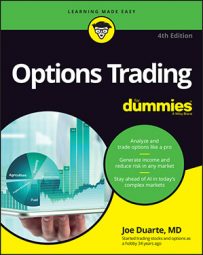Even the best trend‐following systems have a relatively large percentage of failed trades, primarily because they depend on several extremely profitable trades to make up for the large percentage of losing trades. If your trend‐following system is also a discretionary system, your discretion (or lack of it) can cause you to miss a few of these profitable trades. In this case, your overall results will suffer.
Trend‐following systems are typically based on either moving averages or breakout patterns. Moving average–based trading systems are the most popular and can be quite profitable; however, they work only when a stock is trending. These trading systems depend on long‐lasting trends to generate enough profit to outweigh a relatively large number of losing trades.
In fact, the number of losing trades can easily outnumber the winning trades with this type of trading system. When a stock is range bound (stuck moving sideways within a specific price range), a moving average–based system generates a large number of losing trades. Because of the high overall number of trades, this system is often accompanied by relatively high transaction and slippage costs. Smart money management protocols are critical when using a trend‐following trading system.You can make some adjustments to a trend‐following system that may improve its performance. For example, you can insist that its trading signals be confirmed by another condition before actually entering any positions. If your system triggers a buy signal, for example, you may want to see whether the signal remains in effect for at least a day or two before entering a position.

